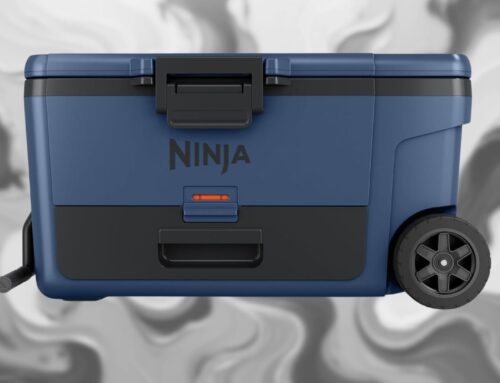The Rise of Indigenous Cannabis
June 30, 2025
Image | adobe.stock/Azahara MarcosDeLeon
There are 574 federally recognized Native American tribes in the United States. Of these tribes, 10% have opened recreation and medical cannabis dispensaries, with 77 cannabis retail outlets owned by 59 different tribes across nine states (1). When you factor in hemp cultivation, there are more than 100 cannabis and hemp cultivation programs in tribal communities. According to the Indigenous Cannabis Industry Association (ICIA), 26% of Indigenous communities in the continental US are involved with cannabis or hemp programs (2). As explained by Rob Pero, founder and CEO of ICIA, who is a member of Bad River and Oneida Nation, as well as the founder and CEO of Perodigm, an independent media agency, and Cannadigenous, which manufactures hemp-derived beverages, the cannabis plant has a rich history across many different tribal cultures.
“Cannabis is represented differently for different nations,” says Pero. “So, the Nez Perce tribe, which is the tribe of our executive director, Mary Jane Oatman, has the hemp rope as part of their origin story. There are also stories of tribes looking at cannabis as plant medicine, for sacramental use, for traditional use, and as more of an industrial commodity for their nations as well. But yes, there’s a rich history with the cannabis plant and indigenous nations. And it’s all very distinct to those sovereign nations.”
Sovereignty is an important aspect of this conversation as well, because as sovereign nations, tribes have the ability to self-determine. That means, in principle, tribal nations can devise and operate cannabis regulations despite state and federal laws against the growth and sale of cannabis. Just like states have been passing laws regulating the production and sale of cannabis, so too can tribal nations. However, tribal nations are also able to do this in states that have not legalized cannabis in medical or recreational capacities.
A key example of this is the Eastern Band of Cherokee Indians (ECBI), which grows and sells medical and recreational cannabis on its tribal land in North Carolina, where cannabis is not legalized in any capacity. On April 20, 2024, the Great Smoky Cannabis Company became the first cannabis dispensary selling medical marijuana to patrons 21 years of age or older with a tribal or valid out-of-state medical cannabis card (3). On July 4th of that same year, the tribal council passed an ordinance that legalized recreational use, expanding access to adult members of any federally recognized tribe. However, as of September 7, 2024, the Great Smoky Cannabis Company began selling cannabis products to any patron over the age of 21. ECBI has really set a precedent for other tribes, says Pero.
Federal agencies have been largely hands off with enforcing the Controlled Substances Act (CSA) since the Cole Memorandum was published. That memo set federal priorities for enforcing the CSA and essentially left it to states and tribal governments with legalized cannabis to enforce their laws as long as they had “effective regulatory and enforcement systems” in place. While the memorandum was struck in 2018, it has more or less been the protocol not to interfere with state and tribal cannabis regulations. However, this has not always been consistent. For example, in October of 2015, the Menominee Indian Tribe of Wisconsin was raided by the Drug Enforcement Agency (DEA) after the tribe had approved the cultivation of hemp on its land (4). The tribe’s decision followed the passage of the 2014 Farm Bill, which allowed states or institutions of higher learning to cultivate hemp for purposes such as research. However, the agency justified its raid and the destruction of the tribe’s hemp crop by stating that the definition of “state” in the “hemp statute” of the 2014 Farm Bill did not include Native American tribes. A judge agreed with this in 2016, dismissing the tribe’s lawsuit against the DEA (5).
That is why the 2018 Farm Bill was so consequential, as it explicitly included tribal governments in the language of the bill. Of course, the bill, for better or worse, helped expand the market for hemp-derived cannabinoids such as the non-psychoactive CBD, as well as intoxicating derivatives such as delta-8 THC. While these products are now a big part of the hemp industry, Pero believes there is much more to hemp. “Unfortunately, what that has done is muddy the waters in regards towhat the industrial hemp market can look like, from a farming and more traditional capacity of fiber and grain,” says Pero. “Because in a perfect world, you should be able to grow a crop on 100 acres, that is a tri crop that grows cannabinoids, that grows fiber, and produces grain. We lack processing in our country to adequately serve farmers who would want to grow a crop like this. So, we grew 40 acres last year in Wisconsin for fiber, grain, and cannabinoids. Our closest processor to be able to handle this is in South Dakota. So how do we cover that cost and still make money with logistics?”
That said, the 2018 Farm Bill was a turning point. “[It] definitely opened the door, and it has opened the door to things nobody saw coming, but for tribes specifically, this is still providing opportunities, more opportunities than there have been before,” says Pero.
Business Landscape
Every tribe has their own way of doing things. In states that have legalized cannabis recreationally, for example, tribal governments have the option of negotiating compacts with the state, in which they’d be operating under the state’s legal framework, or they can choose to operate independently and establish their own regulations. This is happening in Minnesota, where tribes like the Red Lake Nation have chosen to operate autonomously of the state. Additionally, each tribe will have their own way of regulating and licensing cannabis to members. With many tribes, cannabis operations are owned by the tribe as a whole, but in some cases, like New York State’s St. Regis Mohawk Tribe, the tribal government is issuing licenses to tribal members to grow and operate cannabis businesses independently (6).Those businesses will be overseen by the Tribal Cannabis Exchange, which will also collect fees. According to the tribe, this process helps diversify the tribe’s local economy as well as provide employment while remitting licensing fees to provide essential community programs and services.
Of course, in the broader hemp space, there are many Native American entrepreneurs who are operating independently of their tribes, such as Pero. And from Pero’s perspective, cannabis and hemp provide opportunities for tribes and tribal members to build bridges with communities outside of tribal boundaries, and prosper.
As an entrepreneur, Pero says he feels like he’s kind of on an island since he doesn’t have financial support from tribal governments, but the process of networking helps cultivate important relationships that allows his and other businesses to prosper.
“Networking, in my opinion, is not only finding potential people to buy your product, but potential people to partner with and learn from,” says Pero. “Yes, I own a media company, and we network, and we work in Indian country. We do all sorts of amazing work. We also work outside of Indian country, and we work in kind of bridge-building ways, and it’s the perfect kind of model of who I am. I’m half German and Polish and half Bad River and Oneida. I am the perfect melting pot of what I think, you know, an Indian is these days; we’re just a marriage of all these things. So, I think it’s important to be networking and building bridges because that’s how we’re going to learn from each other. And I feel like more than ever now, we need to find better ways to work together as a community and keep the dollar touching more spots, you know, within our own communities and within our own state.”
Pero says that tribes have the opportunity to lead in the cannabis space, which has so much potential for the health of humans and the environment, but collaboration is key.“I’m not a tribal leader, I’m a business person that wants to connect. So, I think that is sort of where I found a good space, by being someone that can help connect a tribal government to an operator,” says Pero. “Through someone like me that can help find resources, we can continue to elevate the work that we’re doing, make more money, hire more people, solve
more problems.”
The Native American experience is a diverse one, Pero explains. As someone who was not born on the reservation or raised on one, he has a different relationship to the tribe than someone who was more entrenched in that community. So, while not all tribal governments are empowering members to grow and operate cannabis businesses independently, Pero wants to encourage Indigenous entrepreneurs to start their own businesses and find a way to work with their Nation while operating independently.
The cannabis space is bound to grow as more states and Native American tribes adopt their own cannabis regulations. While this inevitably creates a layered patchwork of laws, it also creates opportunities for business owners, generates jobs, and in the case of minority communities like Native Americans, empowers them and promotes upward mobility.
References
- Klas, M. Tribally owned cannabis stores have grown by 24% since May 2024. MJBizDaily. May 23, 2025. https://mjbizdaily.com/tribally-owned-cannabis-stores-have-grown-by-24-percent-since-may-2024/ (Accessed 2025-06-09)
- Colli, M. First-Ever Map of Tribal Cannabis and Hemp Programs Released by Indigenous Cannabis Industry Association and Vicente LLP. Cannabis Science and Technology. May 15, 2025. https://www.cannabissciencetech.com/view/first-ever-map-of-tribal-cannabis-and-hemp-programs-released-by-indigenous-cannabis-industry-association-and-vicente-llp (Accessed 2025-06-09)
- Littman, A. Cherokee nation expands dispensary to sell recreational marijuana. The Chronicle. August 30, 2024. https://www.dukechronicle.com/article/2024/08/duke-university-cherokee-nation-recreational-marijuana-dispensary-sept-7-tribal-council-qualla-boundary-decriminalization-qualla-enterprises-hamil-luker (Accessed 2025-06-09)
- Menominee Tribe’s Hemp Crop Destroyed by DEA Agents. 58 News Milwaukee. October 24, 2015. https://www.cbs58.com/news/menominee-tribes-hemp-crop-destroyed-by-dea-agents (Accessed 2025-06-09)
- Garza, J. Judge dismisses Menominee tribe’s lawsuit over hemp raid. Milwaukee Journal Sentinel. May 22, 2016. https://www.jsonline.com/story/news/local/wisconsin/2016/05/23/judge-dismisses-menominee-tribes-lawsuit-over-hemp-raid/85002658/ (Accessed 2025-06-09)
- Lewis, R.C. Indigenous tribes taking the lead on legal weed. City & State New York. August 2, 2021. https://www.cityandstateny.com/policy/2021/08/indigenous-tribes-taking-lead-legal-weed/184235/ (Accessed 2025-06-09)
How to Cite This Article
Krawiec, S. The Rise of Indigenous Cannabis, Cannabis Science and Technology, 2025, 8(3), 20-22.
Search
RECENT PRESS RELEASES
Related Post



